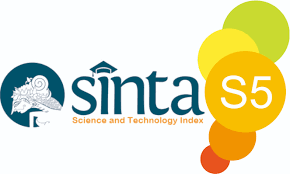A KAJIAN LOKASI UNTUK OCEANARIUM DI SURABAYA: KESEIMBANGAN ANTARA WISATA, PENDIDIKAN DAN RISET
-
Abstract
This research examines the siting factors of an oceanarium in Surabaya, Indonesia. The research stems from the need to explore the optimal location for an oceanarium, taking into account the main objectives and functions of the development. The research aims to determine the most suitable location for an oceanarium, with recreation, education, conservation and research being the main considerations. The methodology involved a qualitative analysis of location factors, including accessibility, availability of natural resources, and environmental and socio-economic impacts. The discussion in this study emphasizes the importance of choosing a location that not only supports the oceanarium's objectives but also takes into account the availability of quality seawater resources. The ideal location recommended is an area adjacent to a clean source of seawater and protected from contamination, such as a location away from a river mouth. In addition, the location should be easily accessible to visitors and support recreation, education, conservation and research activities. The conclusion of this study shows that the best location for oceanarium development in Surabaya is the coastal area that fulfills these criteria, namely Kenjeran Lama beach and Ria Kenjeran Beach. This location stands out as the most strategic location in terms of access and travel time. These locations not only support the sustainability of the oceanarium in terms of ecology but also provide added value in terms of economy, education, recreation and research. This research provides valuable guidance for future oceanarium development, both in Surabaya and other locations in Indonesia.References
Bungin, B. (2001). Metodologi Penelitian Kualitatif : Aktualisasi metodologis ke arah ragam varian kontemporer. Rajawali Press.
Cereja, R., Brotas, V., Nunes , S., Rodrigues, M., Cruz, J. P., & Brito, A. C. (2022). DOI: https://doi.org/10.1016/j.ecolind.2022.108715. Pengaruh pasang surut terhadap indikator kualitas air di muara mesotidal beriklim sedang (Muara Tagus, Portugal).
Hashrawi , G. A., & Sugihartoyo, S. (2015). Jurnal Planesa, Volume 6 Nomor 2. Strategi Pengembangan Pariwisata di Pulau Belakang Padang.
Jumlah Penduduk Menurut Jenis Kelamin dan Kabupaten/Kota Provinsi Jawa Timur (Jiwa), 2021-2023. (2023). Retrieved from Badan Pusat Statistik Provinsi Jawa Timur: https://jatim.bps.go.id/indicator/12/375/1/jumlah-penduduk-provinsi-jawa-timur.html
Marine Life in Captivity. (n.d.). Retrieved from Marinebio: https://www.marinebio.org/creatures/marine-life-in-captivity-exploring-the-pros-and-cons/
Orth, D. J. (2023). Public Aquariums and Their Role in Education, Science, and Conservation. Retrieved from https://pressbooks.lib.vt.edu/fishandconservation/.
Santika, E. F. (2023). Daftar PDRB per Kapita di Seluruh Provinsi Indonesia pada 2022, DKI Jakarta Tetap Jadi yang Tertinggi. Retrieved from Databoks: https://databoks.katadata.co.id/datapublish/2023/04/13/daftar-pdrb-per-kapita-di-seluruh-provinsi-indonesia-pada-2022-dki-jakarta-tetap-jadi-yang-tertinggi
Sulistyadi, Y., Eddyono, F., & Entas, D. (Bandar Lampung). Indikator Perencanaan Pengembangan Pariwisata Berkelanjutan. 2021: CV. Anugrah Utama Raharja.
Copyright (c) 2024 Sidi Ahyar Wiraguna Wiraguna

This work is licensed under a Creative Commons Attribution-NonCommercial 4.0 International License.













